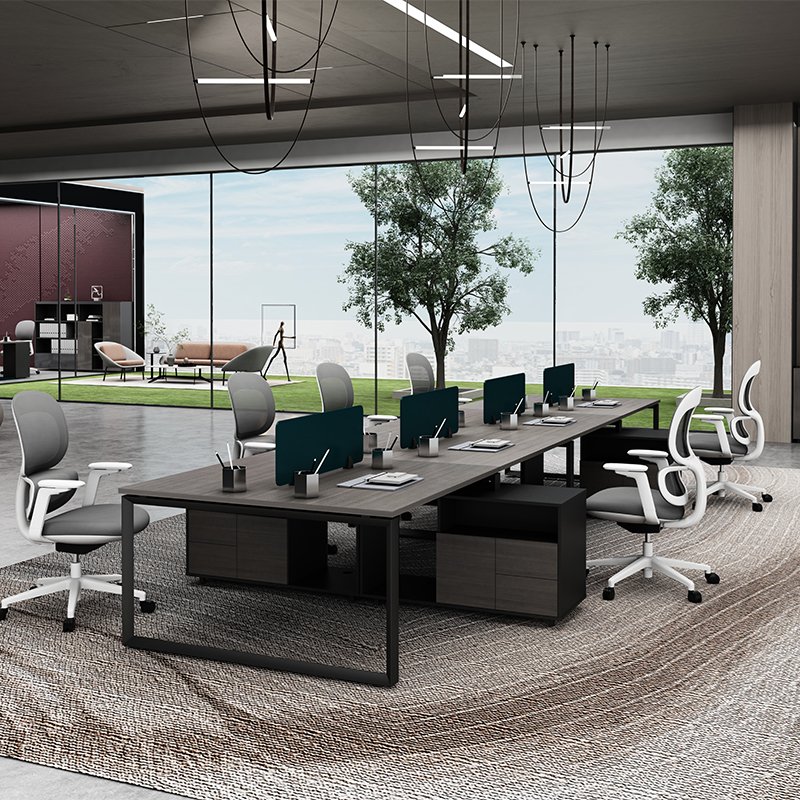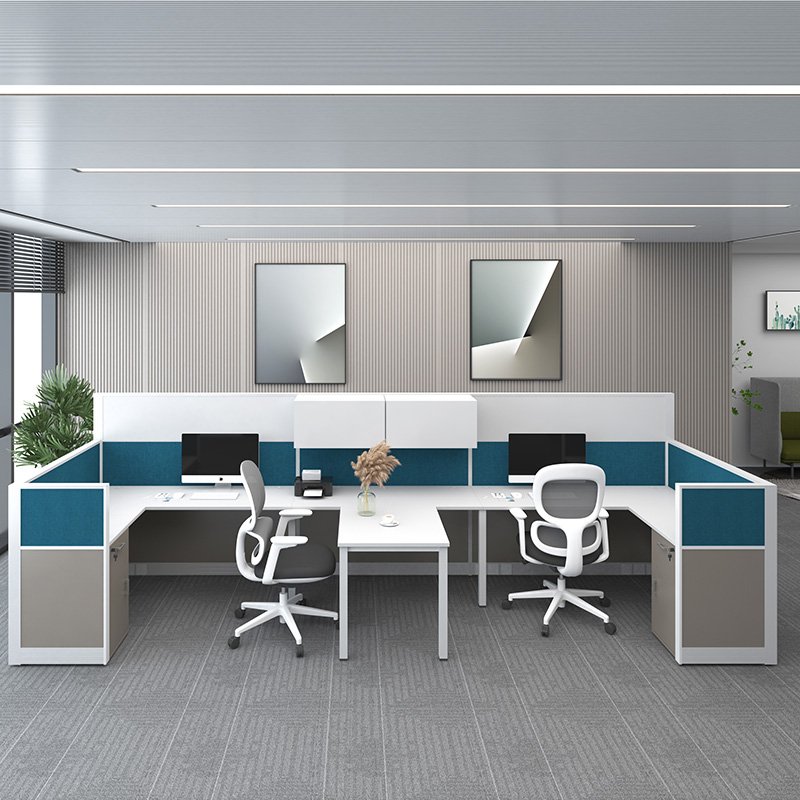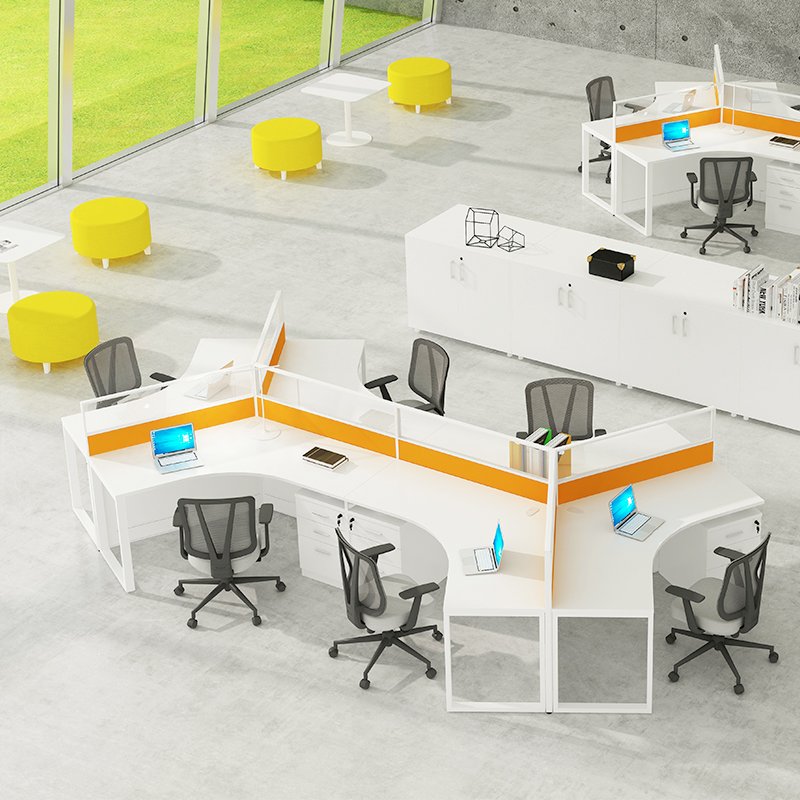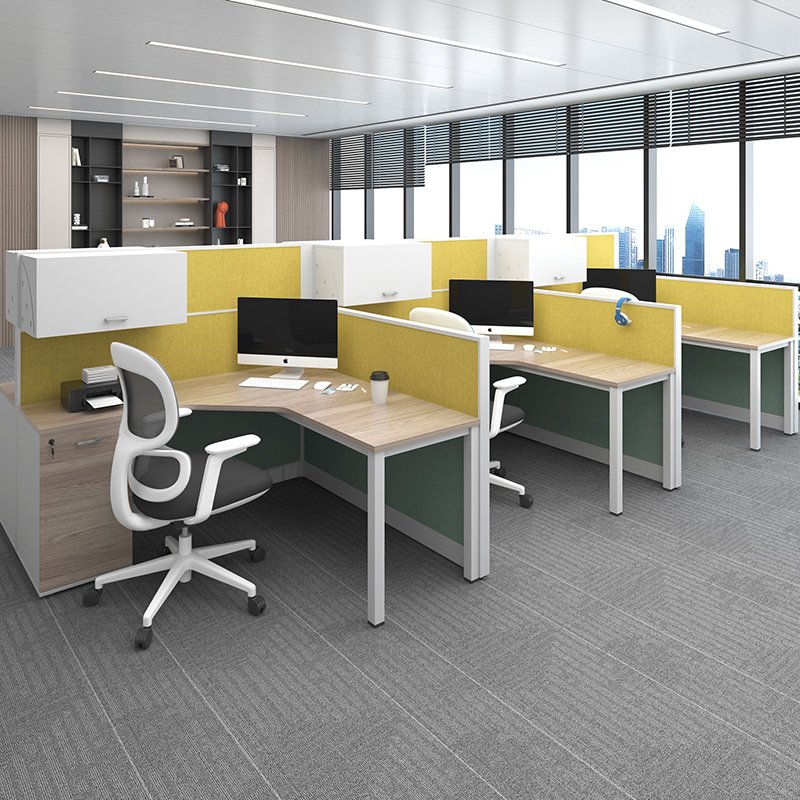As we navigate through the evolving business landscape, office design and layout have become pivotal in driving productivity and maintaining employee well-being. Central to this is the selection of the right type of office workstation, a choice that can significantly enhance both comfort and efficiency in the workplace. This blog aims to provide a comprehensive guide on understanding what an office workstation is and how to choose the best suited to your business needs.
What is an Office Workstation
An office workstation is more than just a desk. It is a dedicated workspace designed to accommodate the specific needs of an individual or team, enabling them to perform their tasks efficiently and comfortably. Unlike traditional desks, workstations are often part of a larger, modular system that can be configured to suit a variety of office layouts and work styles.
A well-designed workstation takes into account ergonomic principles, facilitating good posture and minimizing strain throughout the workday. It also incorporates storage solutions, cable management systems, and often, integrated technology to streamline work processes.
In contrast to a traditional desk, which serves as a simple, standalone surface for work, a workstation is a functional and flexible solution that can adapt to the evolving needs of a business and its employees. From individual workstations with privacy panels for focused work to collaborative workstations designed for team interaction, the possibilities are almost endless.
By understanding the role and potential of an office workstation, businesses can make informed decisions that enhance employee productivity, health, and satisfaction.
Evaluating Your Business Needs
Ensuring your office furniture meets your business needs is a crucial step in creating a productive and comfortable workspace. It involves careful consideration of several factors including the nature of work, space availability, employee preferences, and budget. Here’s a closer look at these key elements:

- Nature of Work: The type of work your business engages in significantly impacts the choice of office workstations. For instance, jobs that demand intensive computer use may require ergonomic workstations that promote comfort and prevent work-related injuries. Creative professions might benefit from open-layout workstations fostering collaboration and brainstorming. Carefully consider your team’s daily tasks and choose office furniture that supports their workflow efficiently.
- Space Availability: Space is a valuable asset in any office. Determining the amount of space available helps decide the type and size of the workstation. In a compact space, vertical workstations or shared desks can be a smart choice, while larger areas may accommodate more expansive setups like U-shaped or L-shaped desks.
- Employee Preferences: Employee satisfaction can significantly impact productivity. Encourage feedback from your team about their preferences. Consider factors like preferred desk height, the need for storage space, or desire for privacy when choosing workstations. An office environment tailored to employee preferences can result in improved morale and productivity.
- Budget: Budget is a critical factor when assessing your office furniture needs. It’s important to balance cost-effectiveness with quality. Investing in durable, well-designed workstations can enhance productivity and reduce long-term replacement costs. However, it’s essential to ensure your choices align with your budgetary constraints.
Evaluating your business needs for office furniture requires a holistic approach encompassing various factors. A well-thought-out decision can result in a comfortable, efficient workspace that drives your business toward success.
Different Workstation Types
Choosing the right workstation can have a considerable impact on productivity, employee satisfaction, and overall office aesthetics. To make an informed decision, it’s vital to consider the nature of your work, the available space, and the needs of your employees. Here, let’s delve into the common types of workstations:
1. L-Shaped Workstations

Efficient and versatile, L-shaped workstations offer a significant work surface in a compact footprint. These desks are ideal for multitasking as they provide enough space for a computer, files, and other office essentials. However, their size may not be suitable for smaller office spaces.
2. U-Shaped Workstations

U-shaped workstations offer a larger workspace and can accommodate multiple monitors, files, and equipment. They’re perfect for professionals who require a lot of space, like architects or designers. On the downside, they may take up considerable space and may not fit in smaller offices.
3. Adjustable Standing Desks
These workstations allow users to alternate between sitting and standing positions. Studies have shown that standing desks can improve posture and reduce the risk of diseases associated with sedentary behavior. They are relatively more expensive than other types but are a great investment in your employees’ health.
4. Modular Workstations

These are perfect for offices with flexible spaces. They’re easy to assemble, disassemble, and reconfigure, allowing you to rearrange your office layout according to changing needs. While highly versatile, their aesthetic appeal may not match that of more traditional desk styles.
Remember, the right workstation for your office largely depends on your specific business needs and the kind of work your employees perform. It may be helpful to involve your team in the decision-making process to ensure their needs are met. After all, a comfortable employee is a productive one.
Selecting Workstations for Different Business Settings
Choosing appropriate workstations for your business setting can significantly improve the efficiency and productivity of your team. The selection process often requires careful consideration of the office layout and the nature of work conducted. Here, we will guide you through the process, illustrating it with various business settings.
1. Open Office Layouts

Workstations for open office layouts must encourage collaboration yet offer employees personal space due to the lack of physical boundaries. L-shaped desks are ideal for this setting as they allow for easy communication while providing ample workspace. Alternatively, benching systems or modular workstations can also serve this purpose while bringing cost-effectiveness and space efficiency.
2. Private Offices
When it comes to private offices, U-shaped and adjustable standing desks are popular choices. These desks offer a generous workspace, and their ergonomic design aids in the overall comfort and productivity of the user.
3. Collaborative Spaces

In collaborative spaces like conference rooms and brainstorming areas, workstations must foster teamwork. Consider using modular workstations that can be easily reconfigured as per the team’s requirements. Round tables also perform exceptionally well in promoting equal participation.
4. Remote Work Setups
-scaled-e1702518067586.jpg)
Remote work setups demand workstations that can fit into various home environments while providing the same comfort and functionality as an office desk. Compact, adjustable standing desks or portable workstations can be ideal for telecommuters.
5. Specialized Work Environments
For workstations in specialized work environments like design studios or technology labs, it is critical to select furniture that supports the specific tasks performed. Adjustable desks with integrated technology ports can be a suitable choice.
Remember, the right workstation for your business should reflect the company’s culture, enhance productivity, and ensure employee comfort. Therefore, while selecting office furniture, consider the unique needs of your business, the nature of the work, and the preferences of your employees.
By making the right choices, you can create a workspace that not only looks good but also functions efficiently, ultimately leading to a happier and more productive team.
Top 5 Office Workstation Manufacturers
- Meet&Co Office Furniture: Established in 2007, Meet&Co Office Furniture is a leading manufacturer from Guangzhou, China, renowned for integrating design, production, and sales. The company’s mission is to innovate office life, and with a presence in over 100 cities worldwide, they’ve helped countless businesses create comfortable and efficient workspaces.
- Herman Miller: A well-known American manufacturer of office furniture and equipment, Herman Miller is renowned for its ergonomic designs that prioritize comfort and productivity.
- Steelcase: As one of the largest office furniture companies globally, Steelcase offers a wide range of office solutions, including workstations that cater to various business needs and settings.
- Haworth: Haworth is a global leader known for its customized workspace designs. They offer a diverse range of workstations to match different office layouts and employee preferences.
- HNI Corporation: This Iowa-based office furniture manufacturer is known for its extensive selection of office solutions, from traditional desks to modular workstations, meeting the needs of various business settings.
Conclusion
Choosing the right office workstation can significantly impact your employees’ productivity, comfort, and overall work experience. This, in turn, drives business performance. As such, it’s essential to thoroughly understand your business’s unique needs and to be aware of different workstation types and their respective features. By doing so, you can find the right solution that will optimally benefit your organization. Now that you are equipped with the knowledge about some leading workstation manufacturers, take the next step and explore their offerings. Remember, the key is to create a workspace that promotes health, happiness, and efficiency.
Contact Meet&Co Office Furniture today to start your journey toward a smarter and more effective office space.

